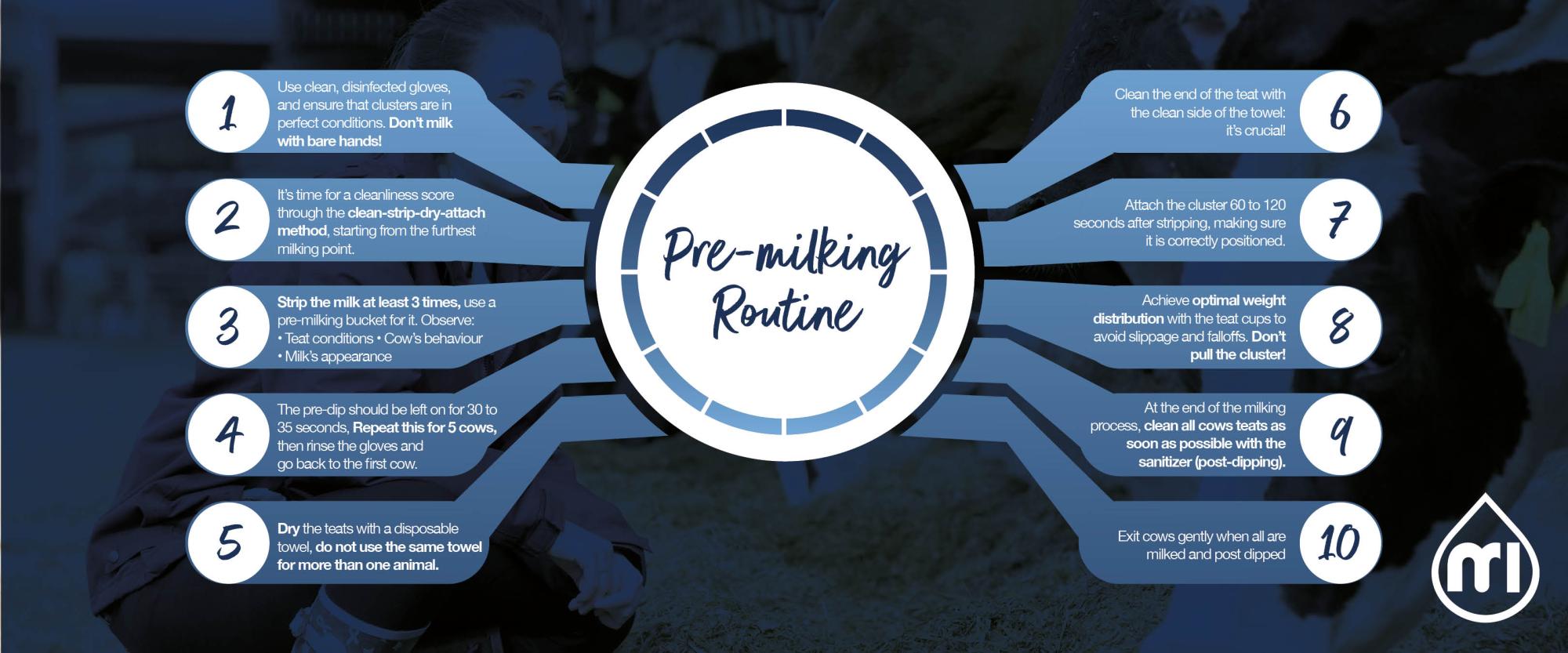
Bactoscan: how to tackle it and make your efficiency thrive again
Let’s talk about this important indicator, revealing the hygiene and quality of your milk.
In the previous article, we talked about the importance of Bactoscan, or Total Bacteria Count, when it comes to measuring the hygiene and quality of your milk. When too high, this indicator reveals inefficiencies in parlour and herd management, which can be seriously affecting the profits of your farm.
For this reason, after carrying out the inspection (mentioned in the previous post), it is extremely important to develop some good practice to follow, making sure to maintain animals as healthy as possible, while the parlour as clean as possible.
It’s all about good practice!
To make sure you take back control of your parlour, animals’ health, and milk quality, here are some key questions and takeaways.
Is your cleaning pattern as complete as possible?
The aim of cleaning should be to ensure complete removal of milk residues. For this reason, it is advisable to:
1. Cleaning and disinfecting the plant while checking the milk filter after every milking, as well as rinsing the tank after every collection.
2. Making sure no dust and milk clog airlines.
3. Starting with a pre-rinse with cold water, removing butterfat and protein.
4. Carrying out a warm cleaning with circulation and detergent after the cold pre-rinse.
5. After the main cleaning, the after-rinse follows with circulation with cold water. To save water, this water can be collected for the next pre-rinse.
6. Temperature must be still at least 50°C at the end of cleaning when discharging the cleaning water. This requires a start temperature of 80°C and higher. During this main cleaning, the vacuum must remain stable. To properly clean the milk pipes, an air injector is needed to create water plugs that rush through the pipes at a speed of 80m/sec.
7. Making sure the equipment is dry in between cleaning and the next milking.
Are you carrying out the correct pre-milking routine?
Make sure you carry out the correct pre-dipping routine, to minimize bacteria load from the teat before connecting the cluster. Here you find a handful of cheat sheets to use anytime you need!

Are you doing your best to ensure the minimum teat-end contamination?
On this note, helpful aspects to focus on are:
1. Ensuring hygienic housing for cows. Not only should they be frequent enough but also big enough to ensure muck does not fall on cubicles.
2. Shaving cows’ udders.
3. Servicing your milking system at least once a year and replacing your liners according to the manufacturer’s advice, generally after 2500 sessions.
4. Clean clusters that fall off during milking before putting them on again.
It is now clear that the number of red flags hiding behind a single indicator is a lot. For this reason, the MI team encourages you to carry out regular inspections, training and maintenance can help keep your farm under control as much as possible, minimizing negative aftermath on your animals, milk quality and at a later stage, profitability.
Sources:
Bactoscan – Wikivet.net, 2011
Bactoscan issues in dairy farm – CID Lines
Tackling High Bactoscans – Farm Advisory Council, 8/2019
Mastitis Part 5 - Bactoscan Problem and Solutions – NADIS Animal Health Skills
